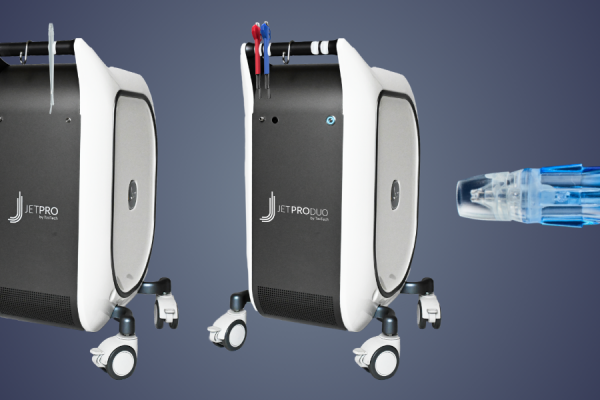Like several industries worldwide, the healthcare sector is also evolving rapidly. Thanks to advancements in modern medicine and technologies, treatments and care options that previously seemed impossible have now become a reality.
If you, too, are part of the healthcare workforce, you must stay up-to-date regarding the latest innovations in the industry. And so, to keep you better informed, we discuss emerging healthcare trends shaping the future of medical practice and the upcoming technologies facilitating them.
Emerging Trends Driving the Future of Healthcare
Although many healthcare trends have been in the pipeline for several years, the recent pandemic and other global issues have precedented their development. Here we list five of the more prominent ones.
Remote health services
During the COVID-19 pandemic, many doctors did virtual and remote consultations mainly because the risk of physical visits was too high. However, remote health services seem like a good idea even without the danger of infectious diseases looming over our heads. Besides being incredibly convenient, this approach makes healthcare services accessible in areas with an extreme lack of resources. All you need is an internet connection, a device to connect it with, and you’re ready to book an online appointment with any physician worldwide.
Multidisciplinary teams
In the past few years, clinical care has become more complex and diverse to ensure patients receive the best possible attention. Contrary to most people, it’s not just the physicians, nurses, or surgeons concerned with a treatment process. Instead, other professions like hospital or clinical administrators, researchers, and health information managers are also thoroughly involved. In fact, MBA schools now offer specialized degrees like the MBA healthcare administration programs to ensure the upcoming generation can integrate well in multidisciplinary teams.
Personalized treatment
The completion of the Human Genome Project in 2003 has entirely revolutionized the foundation of disease diagnosis and treatment. This landmark effort of identifying and mapping all the genes that make up human DNA has opened doors to a new field of medicine in which each drug or therapeutic gets explicitly designed for one individual. Besides predicting its efficacy in a patient, it can also help gauge the best dose-response rate in the body. And with sequencing technology becoming more readily accessible worldwide, it’s only a matter of time before every physician orders a DNA test, then customizes a therapeutic.
More digitalization
Unsurprisingly, the four big tech giants—Apple, Google, Facebook, and Amazon—are increasingly becoming more interested in the healthcare industry. This is because the entire healthcare sector is getting increasingly digitalized and incorporating the latest tech as they emerge. Since this industry often deals with heavy and complex data, making this transformation seems logical. From giving rise to telemedicine to streamlining routine processes, this digitalization has made lives incredibly convenient. For example, electronic health records using the latest technology have made it possible to make patient reports readily available to all team members. Besides making the entire patient experience seamless and hassle-free, this reduces overhead costs and allows healthcare workers to utilize their time more efficiently.
Mental health awareness
For several decades, healthcare workers have known how mental health can impact the overall being of an individual. But despite this knowledge, very few gave it the attention it deserved. But now, physicians take a more holistic approach when caring for their patients. This means that they also consider their mental health besides focusing on a patient’s physical symptoms. Additionally, when educating the public on overall well-being, healthcare workers emphasize the welfare of both physical and psychological health.

Emerging Technologies Driving the Future of Healthcare
The only way to move forward in healthcare is to embrace modern technologies as they come. And although several new ones are emerging daily, here we discuss the top five.
3D printing
3D printing technology is exactly what it sounds like. It’s how healthcare professionals can now design and “print” physical objects such as prosthetics, anatomical models, and medical devices. Surgeons can use this technology to create patient-specific implants that perfectly fit an individual’s anatomy, reducing the risk of complications during the surgery. This technology also facilitates regenerative medicine advancements by producing bioengineered tissues and organs. These models can be used to study anatomy more closely and maybe even for transplantation soon.
Robotics
In today’s operation theatres, healthcare workers employ robots to help perform complex surgeries with enhanced precision and accuracy. For example, the da Vinci Surgical System is an advanced robotic tool that enables surgeons to operate with smaller incisions, reduced blood loss, and faster patient recovery time. Hospitals and clinics can also use robots to perform repetitive tasks like dispensing medicine or sterilizing exam rooms. Besides minimizing the risk of human error, this approach allows healthcare workers to take care of more urgent tasks and focus their attention on their patients.
Artificial intelligence (AI)
The healthcare sector relies heavily on data and records to make medical decisions and improvise treatment. Each year, this industry generates more than 19 terabytes of clinical data—which, although very valuable, is impossible to analyze. But by leveraging AI algorithms into the equation, healthcare industries can sort, investigate, and interpret massive amounts of data with quick turnaround times. Using this data, it can also identify patterns to predict possible health outcomes so doctors can make timely interventions.
Nanomedicine
Nanomedicine integrates nanotechnology and medicine to create innovative solutions for patient care. This technology employs materials and devices at the nanoscale, allowing them to enter the targeted site directly. Depending on the therapeutic regimen, nanomedicine can carry drugs, edited genes, or other curative agents into a patient’s cell. Since it gets inserted into the target site unswervingly, it improves drug bioavailability and enhances its effect on the patient. Likewise, since it’s unable to travel anywhere else in the body, it has minimal toxic effects on other organs or cells.
Wearable devices
These include fitness trackers, wearable blood pressure monitors, biosensors, smart watches, etc. By connecting with a user’s handheld device, they provide real-time healthcare data on various parameters like pulse rate, calories burnt, activity levels, or sleep patterns. This data gets collected onto a single platform which can help users take proactive steps for a healthier lifestyle. Even physicians and consultants can receive real-time patient vitals data to detect strange anomalies at the right time.
Conclusion
It’s important to understand that technology is here to stay. And for any industry to progress and advance, the best course of action is to embrace these innovations and use them wisely. The healthcare industry is among those who are experiencing unprecedented growth first-hand. And so, to stay sharp and ahead in this fast-evolving world, healthcare professionals must continue to develop their skills and knowledge right along with it.





